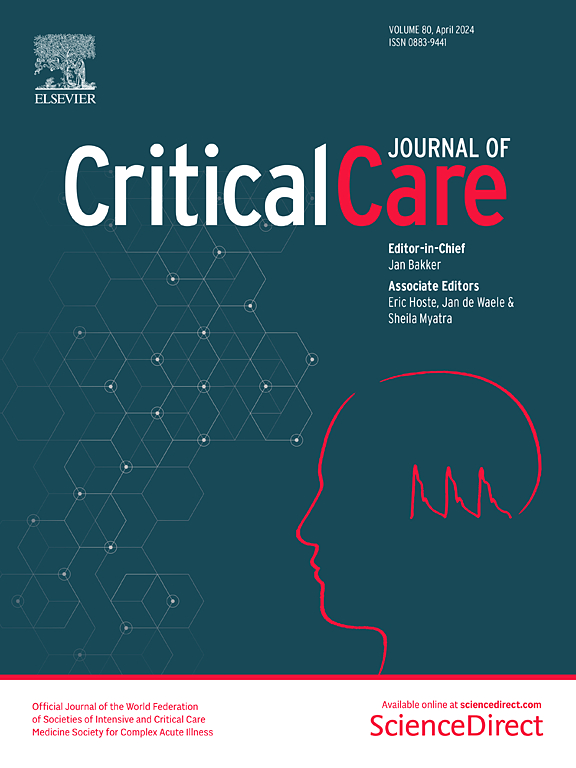Streamlining data recording through optical character recognition: a prospective multi-center study in intensive care units
IF 8.8
1区 医学
Q1 CRITICAL CARE MEDICINE
引用次数: 0
Abstract
The manual entry of data into large patient databases requires significant resources and time. It is possible that a system that is enhanced with the technology of optical character recognition (OCR) can facilitate data entry, reduce data entry errors, and decrease the burden on healthcare personnel. This was a prospective multi-center observational study across intensive care units (ICU) in 3 countries. Subjects were critically-ill and required invasive mechanical ventilation and extracorporeal life support. Clinical photos from various medical devices were uploaded using an OCR-enhanced case record form. The degree of data completeness, data accuracy, and time saved in entering data were compared with conventional manual data entry. The OCR-based system was developed with 868 photos and validated with 469 photos. In independent validation by 8 untrained personnel involving 1018 data points, the overall data completeness was 98.5% (range 98.2–100%), while the overall data accuracy was 96.9% (range 95.3–100%). It significantly reduced data entry time compared to manual entry (mean reduction 43.9% [range 27.0–1.1%]). The average data entry time needed per patient were 3.4 (range 1.2–5.9) minutes with the OCR-based system, compared with 6.0 (range 2.2–8.1) minutes with manual data entry. Users reported high satisfaction with the tool, with an overall recommendation rate of 4.25 ± 1.04 (maximum of 5). An OCR-based data entry system can effectively and efficiently facilitate data entry into clinical databases, making it a promising tool for future clinical data management. Wider uptake of these systems should be encouraged to better understand their strengths and limitations in both clinical and research settings.求助全文
约1分钟内获得全文
求助全文
来源期刊

Critical Care
医学-危重病医学
CiteScore
20.60
自引率
3.30%
发文量
348
审稿时长
1.5 months
期刊介绍:
Critical Care is an esteemed international medical journal that undergoes a rigorous peer-review process to maintain its high quality standards. Its primary objective is to enhance the healthcare services offered to critically ill patients. To achieve this, the journal focuses on gathering, exchanging, disseminating, and endorsing evidence-based information that is highly relevant to intensivists. By doing so, Critical Care seeks to provide a thorough and inclusive examination of the intensive care field.
 求助内容:
求助内容: 应助结果提醒方式:
应助结果提醒方式:


